Chariots and Pierced Tongues:
Bisket Jatra Festival in Bhaktapur
It takes something special to keep me in the city of Kathmandu for an extra week instead of jaunting off to the mountains of Nepal. I’ve had good luck in the past with festivals in this country, though, whether with Tibetan monks at the Mani Rimdu festival high in the Himalaya or way down in the plains of Janakpur where Sita and Rama were married at the Sita Bibaha. With the promise of a tongue-piercing chariot-dragging good time just outside of Kathmandu, then, how could I say no to adding this to my ultimate Nepal itinerary?
(Note: this one is pretty photo heavy. Put on your glasses, shut off your Dropbox, and welcome to the weird world of the Bisket Jatra festival.)
Even walking into the old town of Bhaktapur, the city feels transformed. What only a week before was a quiet warren of architectural inspiration of centuries past is now a teeming mass of people among whom the sounds of beating drums and full-throated yells that resound from every open space in the center of town. Anywhere there’s space, it seems, people are assembled en masse to watch processions of chariots and beshrined palanquins or to help pull down a symbolic wooden pole that doubles as a Shiva lingam. It’s loud, crazy, colorful chaos.
Bisket Jatra is a fete, for sure, but also a festival with religious and historical roots. In times long past a cursed princess cast a death spell on every suitor who gained her marriage bed. One brave soul, one of the last eligible bachelors in the kingdom of Bhaktapur, survived his nuptial night by forcing himself awake long enough to slay the two evil serpents that emerged from the princess’ nostrils to claim his life. This hero, celebrated by all the kingdom, was the cause of the original Bisket Jatra and his deeds are remembered to this day in the form of the two long ribbons that hang off the Yoshin Pole as a testament to the two slain snakes of legend.
Bhairab and Bhadrakali, the main protective deities of the Kathmandu Valley, are celebrated in their own way as shrines to each of them are built atop giant wooden chariots that celebrants heave and ho through the streets of town. As if the cheering crowds aren’t enough indication, cries of “Aasa! Oosa!” (“Push! Pull!”) forewarn the impending arrival of these wagons and the hordes who tug them along. Others, though exhibiting less sheer physical might, worship in a quieter but no less poignant way.
For some this means carrying a much smaller shrine on a palanquin through the streets, to meet at the holiest sites in town with other chariots to other gods who served as friends or consorts in the ancient past. For others, devotion in the form of music: drum circles and wandering bands and tuned-in musicians that add song and dance and revelry to the overwhelming miasma of sound and bodies and somehow convert it all into celebratory meeting of humanity.
At the very center of it all, marking the moment of beginning of another new year, is the felling of the Yoshin Pole. Historic for its heroically slayed snakes, religious for its lingam-like construction, the 80ft pole is equally a focus of worship and wonder and wariness. On the first day of the new year, the strong ropes that keep the pole in place are untied and those same sounds – Aasa! Oosa! – are to be heard once more as the pole is pushed and pulled till it plunges to the square far below.
All the while outside the center of town, in nearby Bode, a different sort of rite is underway. On the second day of the Nepali new year, as they’ve done for over a hundred years, the villagers of Bode gather for the Sunder Jatra. More drums and more crowds, but with an even more colorful and painful and boisterous celebration. The morning is devoted to covering the streets and faces of Bode in vermillion powder. The real craziness, however, will wait till afternoon.
After proceeding through the streets to stop at every small shrine, one local man mounts a stage just on the outskirts of town. As a large steel needle is carried overhead through the dense crowds, the man on stage makes a few modest bows and takes his seat. Slowly, methodically, a village elder cleans the needle. Cleans the volunteer’s tongue. Then quickly pierces the latter with the former – all to an immense cheer from the assembled mass of spectators.
Seemingly undaunted, hardly showing any reaction at all, the pierced man lifts a trellis of burning bamboo poles and marches back off into the crowd. The dancing and the music and the drinking will go on for three days yet. But the calendar, and the good fortune that such an act of penance is held to bestow on the area for the coming year, these have already begun. All that’s left now is to sit back and watch the rest unfold.
So, what do you think? Was Bisket Jatra worth sticking around the Kathmandu Valley for? More photos on my travel photography portfolio.

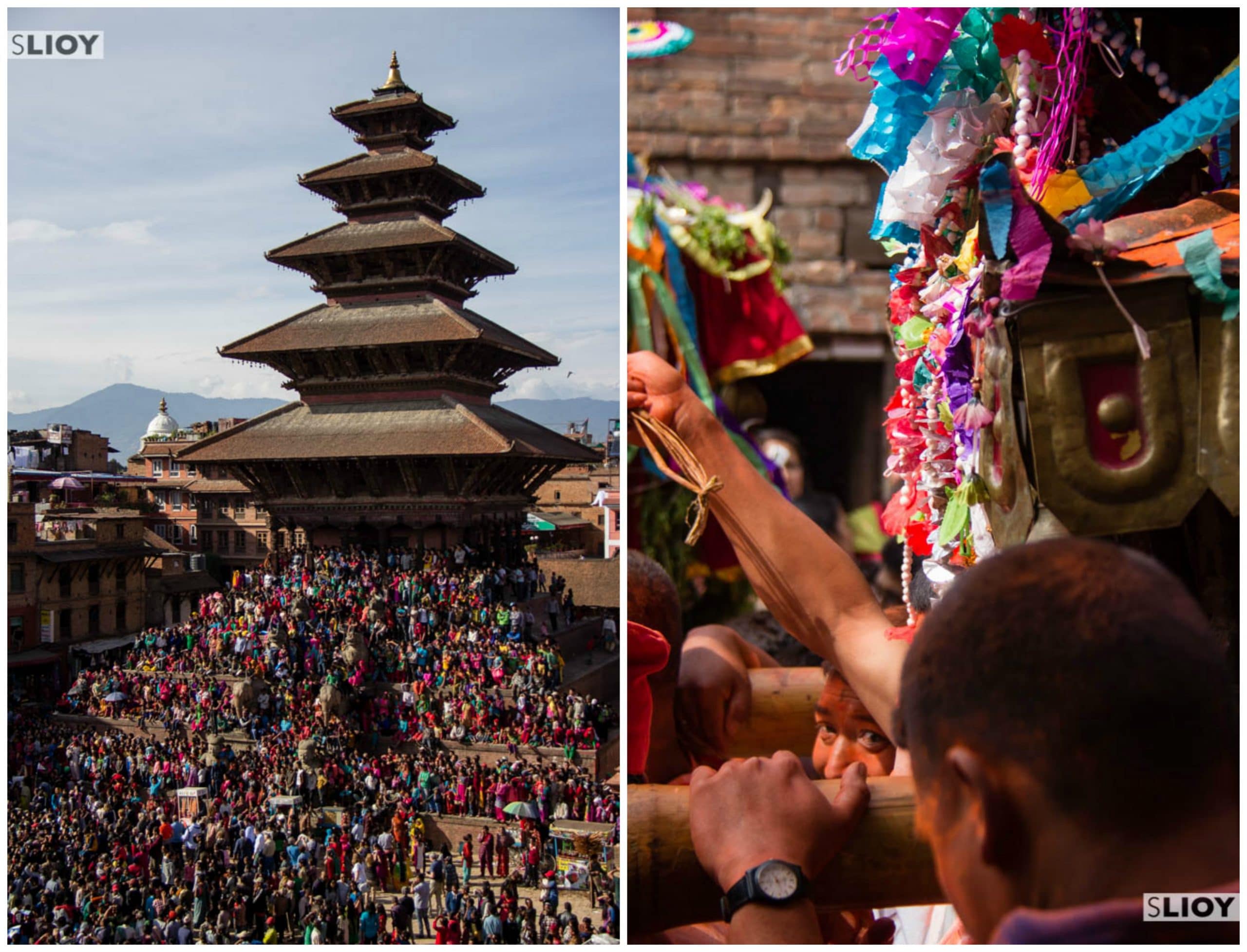
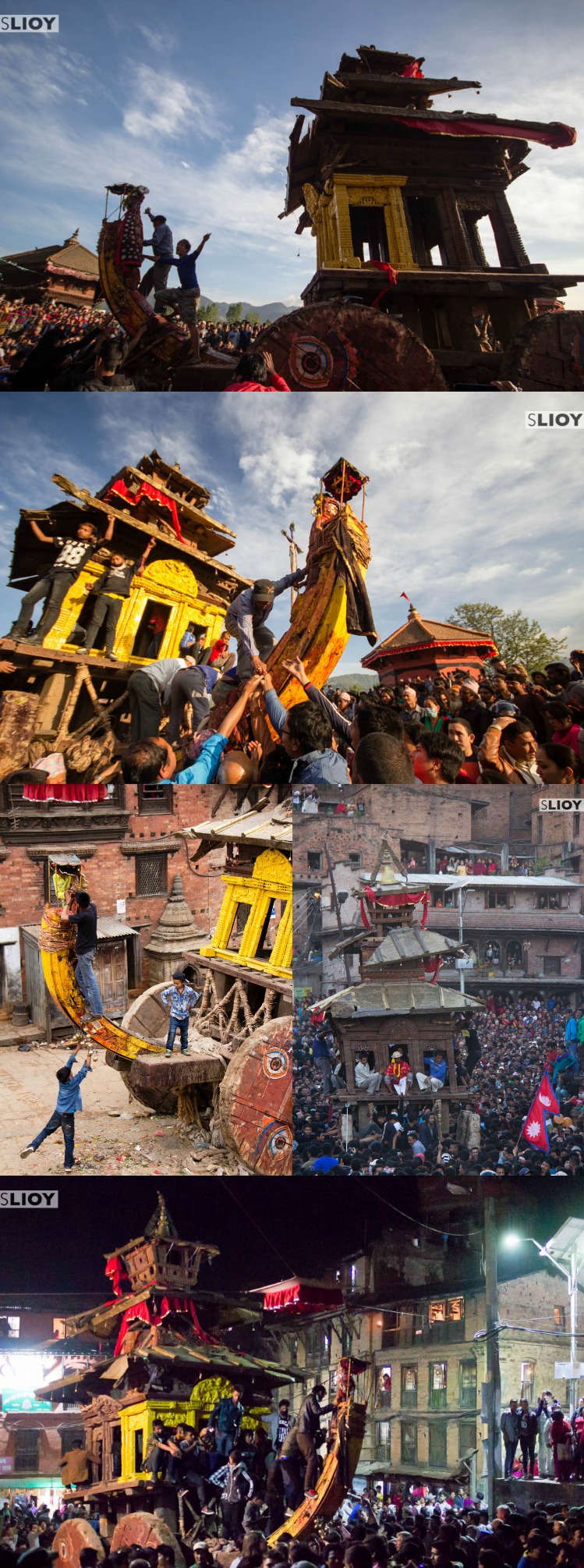

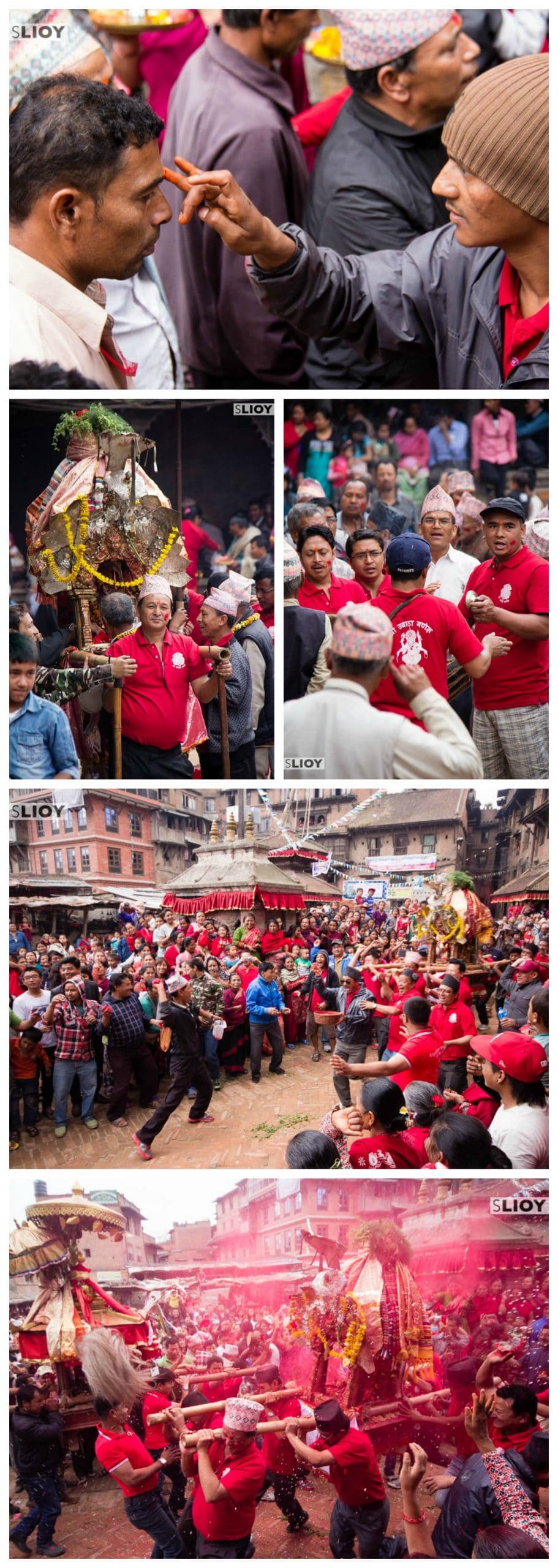
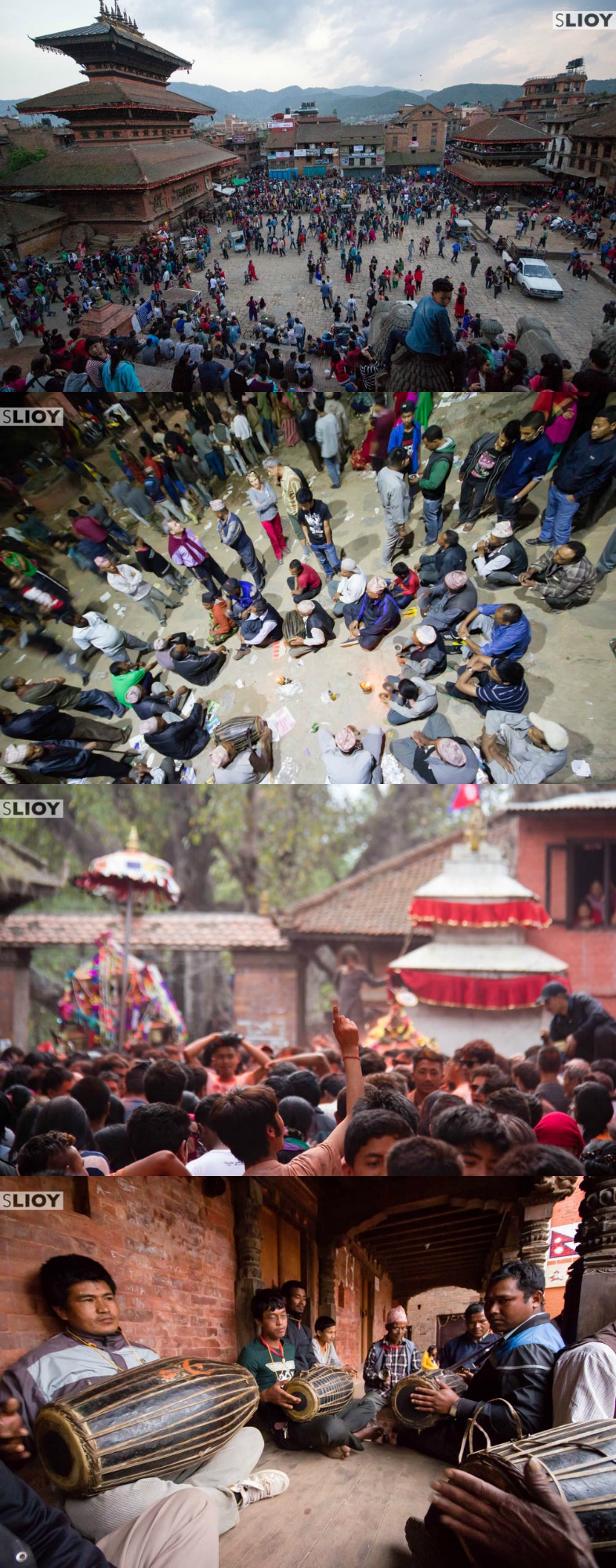
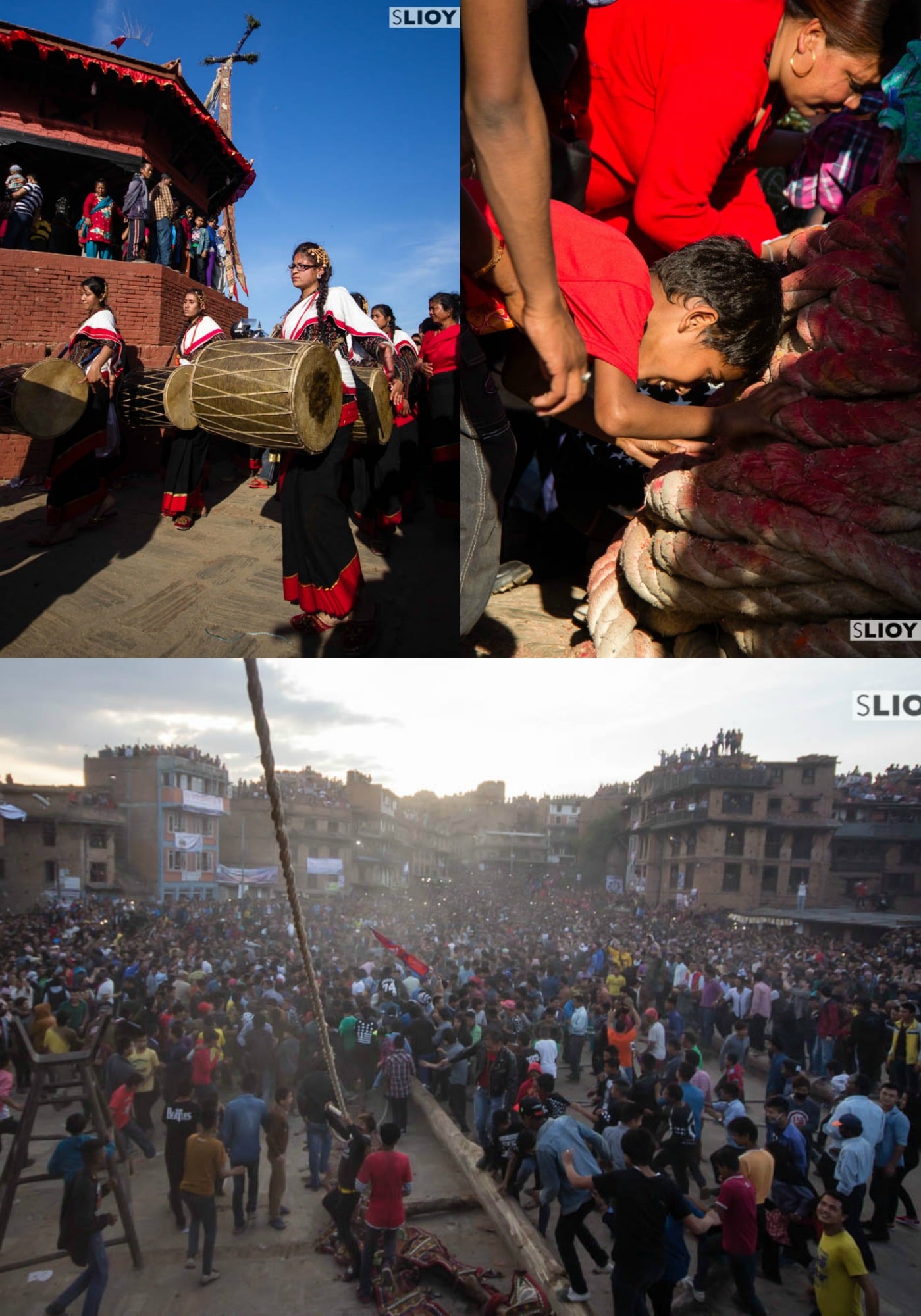
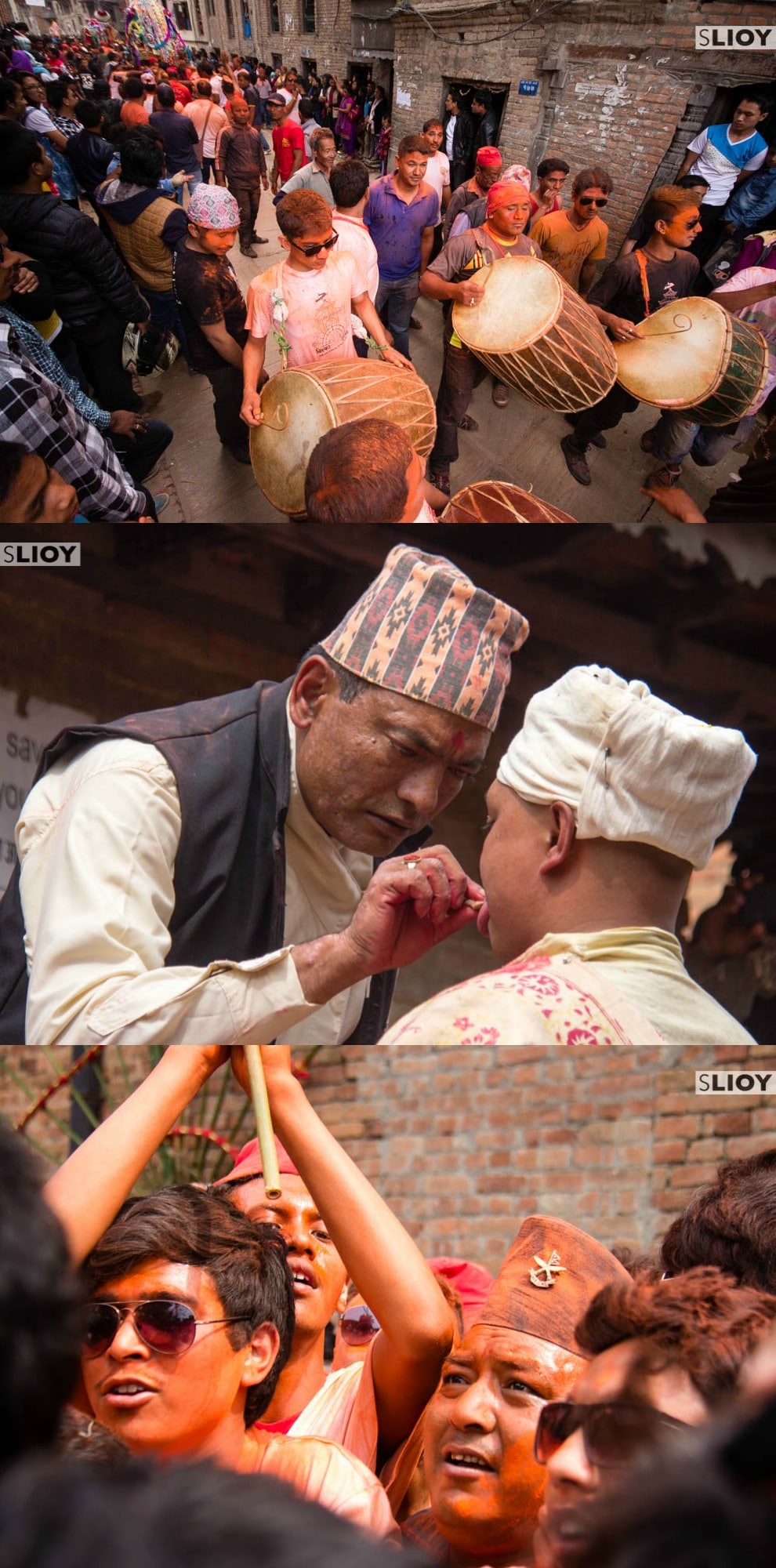
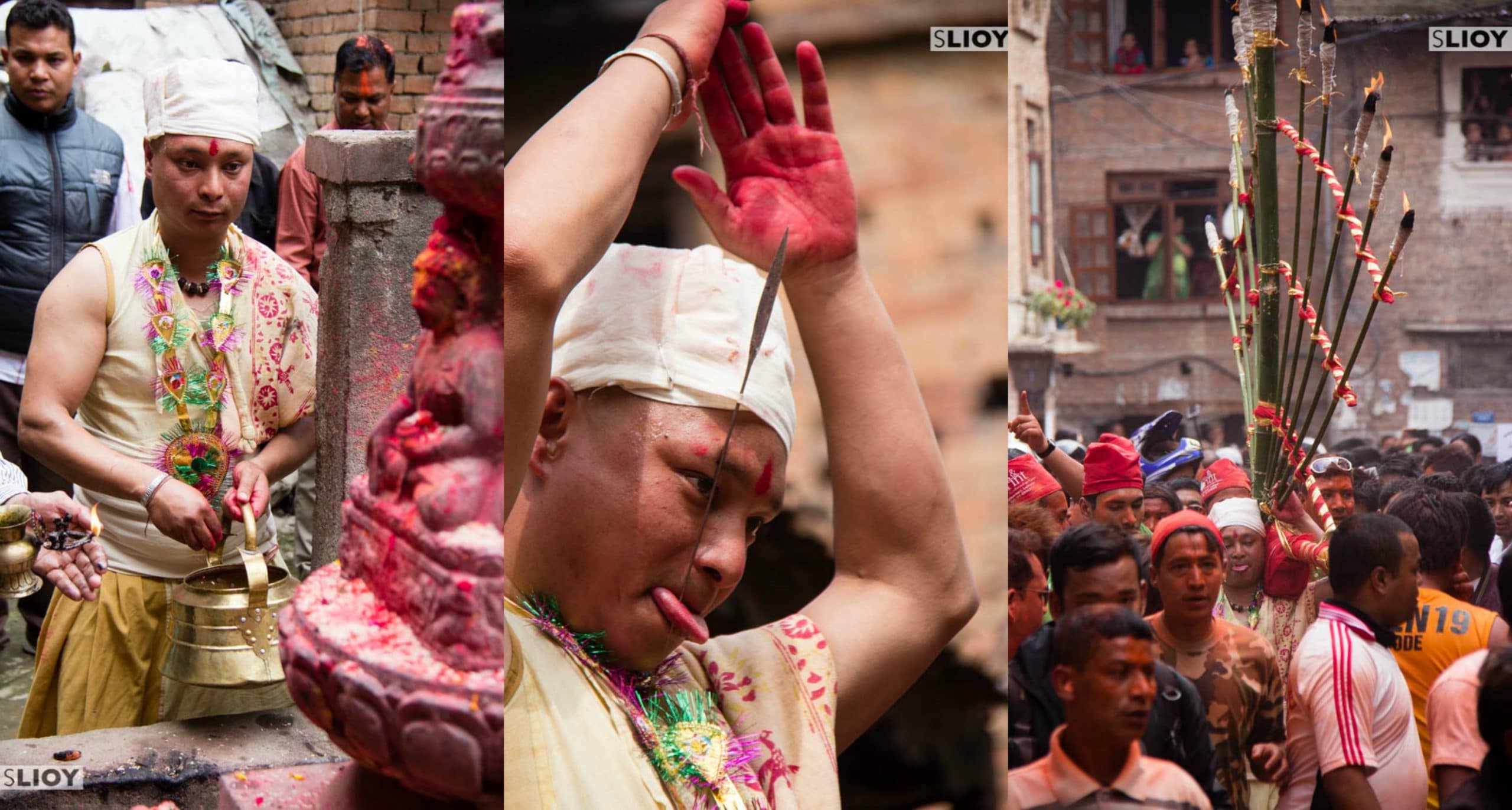

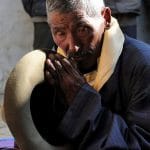
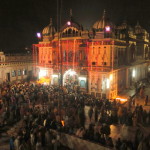
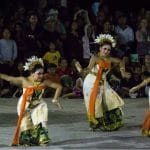
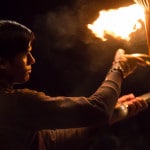
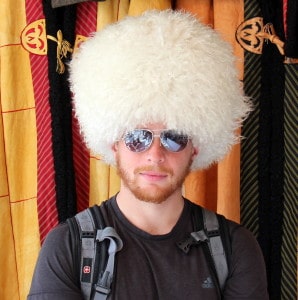
That is sure not like a Louisiana Crayfish Festival.
Most interesting.
A little different, eh? Though I must say a picnic table full of crawfish would have been a great way to finish the day!
This looks like it was definitely worth staying around for!
If these were the moments you remembered to capture. I can only imagine how it was when you forgot to reach for your camera…
It’s a bit of a rare things these days that I forget to grab the camera, but there were lots of similar moments to these over the course of the day where the angles or the lighting just didn’t line up well. I agree with you, though, I’m glad I stuck around long enough to see it!
Wow these pics are incredible – so vibrant and fun
Thanks! Those are both words I’d use to describe Bisket Jatra itself, so I’m glad the photos captured a bit of it for you!
I think this festival goes in my “maybe…a little overwhelming” jar!
It’s definitely not for everybody… even after just a few days I was ready for a breather. There are also some lovely rooftops in Bhaktapur from which it was a bit easier to watch while removed from the scrum and so still enjoy it but not have to be in the thick of it. Perhaps that’s the better solution for you?
Loved your photos! They made me feel like I was there. Amazing festival, would want to experience it one day.
Please do add it to your list, and Nepal more generally. It’s an amazing country, and they’ll definitely need the tourism dollars to start flowing again as they begin the rebuilding process after the earthquakes.
I loved your intro – welcome to the wierd world of Bisket Jatra. Beautiful captures, and especially important to be circulating right now, because Nepal needs all the help it can to recover (especially financial)
Thank ya! It was an AMAZINGLY photogenic few days, and I was glad to be there for it (and doubly so when I heard about the quakes a week later).
Wow, what an amazing and unforgettable experience to have been part of. I bet it feels even more devastating to see what has happened in Nepal. We still plan on visiting in the next few years and hope we can help too.
It’s crazy to look at photos from these same squares now, and see tons of the temples just totally missing. I want to get back myself soon, and I’m glad to hear other travelers expressing the same sentiment!
I already knew that Nepal is very interesting country. The festival seems amazing very colourful and your pictures are very alive!
Thanks Chrysoula, I’m glad you enjoyed them!